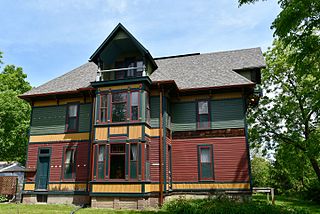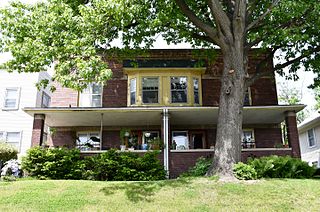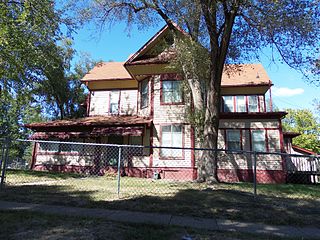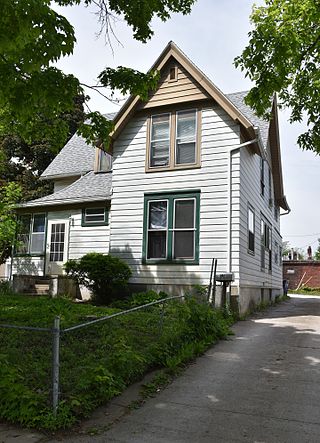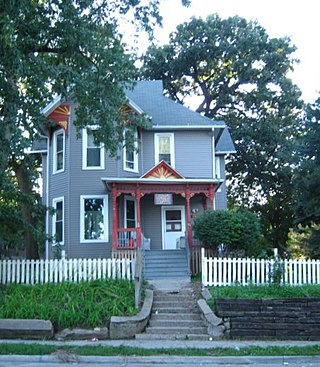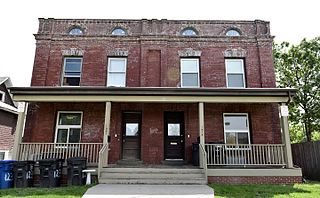Self-guided Sightseeing Tour #5 in Des Moines, United States
Legend
Tour Facts
1.5 km
0 m
Experience Des Moines in United States in a whole new way with our free self-guided sightseeing tour. This site not only offers you practical information and insider tips, but also a rich variety of activities and sights you shouldn't miss. Whether you love art and culture, want to explore historical sites or simply want to experience the vibrant atmosphere of a lively city - you'll find everything you need for your personal adventure here.
Individual Sights in Des MoinesSight 1: Rev. R.W. and Fannie E. Keeler House
The Rev. R.W. and Fannie E. Keeler House, also known as the Henry C. Borzo House, is a historic building located in Des Moines, Iowa, United States. The house is significant for its being one of the best examples in Des Moines of the attic balcony gable subtype of the Stick Style. It was built by local contractor-builder Detwiler and Bedford in 1889 as speculative housing. Most residential construction in Des Moines was in small developments between about 1880 and 1941, and this house was a part of one such development. This 2½-story frame structure shows its Stick Style influence with a hip and gabled roof, decorative trussed attic balconies that are supported by large decorative brackets, wide bracketed overhanging eaves, and wood clapboard walls with decorative patterns of horizontal boards. The property also contains a barn from the same time period, but it has been significantly altered over the years and now serves as a garage. The house was listed on the National Register of Historic Places in 1993.
Wikipedia: Rev. R.W. and Fannie E. Keeler House (EN), Heritage Website
Sight 2: Susie P. Turner Double House
The Susie P. Turner Double House is a historic building located in Des Moines, Iowa, United States. This two-story duplex features a symmetrical facade, brick in various colors, decorative cast stone, and a fullwidth front porch that is supported by three brick columns. Built in 1914, its significance is its combination of Prairie School architecture and American Craftsman styling. At the time it was constructed the double house was still a somewhat uncommon building type in Des Moines. The house was listed on the National Register of Historic Places in 1998.
Wikipedia: Susie P. Turner Double House (EN), Heritage Website
Sight 3: Byron A. Beeson House
The Byron A. Beeson House, also known as Mission Temple Academy, is a historic building located in Des Moines, Iowa, United States. Built c. 1890, the 2½-story structure features balloon frame construction, a complex roof system, and wrap-around front porch. Its flared cornice is considered unusual. It was originally a single-family dwelling that later became and education facility associated with the Church of God in Christ. It is also associated with Byron A. Beeson who served as Treasurer of Iowa from 1891 to 1895, and as Adjutant General of the Iowa National Guard around the same time. The house's significance is derived from its location in suburban North Des Moines and its complex roof system. It was listed on the National Register of Historic Places in 1996. A stable along the alley behind the house shares the historic designation.
Sight 4: Charles H. and Lena May Weitz House
The Charles H. and Lena May Weitz House is a historic building located in Des Moines, Iowa, United States. This 1½-story frame dwelling features a gable-front-and-wing configuration, a front porch located in the el of the facade, a single-story bay window on the south elevation, a dormer window on the facade, and steeply pitched roofs. Behind the house is a two-story, brick outbuilding. It is one of the few brick out buildings in the neighborhood. Both were constructed about 1891 by Charles H. Weitz for his home and his workshop. He was a partner and elder son of the founder of Charles Weitz & Sons, which was a prominent Des Moines construction firm in the late 19th and early 20th-century. During his time with the company, Charles H. Weitz "introduced modern methods of construction to this family business, thereby assuring its potential for growth." The Weitz Company grew to become a nationally recognized full-service general contractor. The house and outbuilding were listed together on the National Register of Historic Places in 1998.
Wikipedia: Charles H. and Lena May Weitz House (EN), Heritage Website
Sight 5: William W. and Elizabeth J. Ainsworth House
The William W. and Elizabeth J. Ainsworth House, also known as the Catholic Worker House and the Dingman House, is an historic building located in Des Moines, Iowa, United States. Ainsworth was a Des Moines businessman who was engaged in various professional occupations. His wife Elizabeth took title to this property in 1886, and they built this 21⁄2-story, frame, Queen Anne house in what was then the suburban community of North Des Moines. It features a hip roof, intersecting gables, a front porch, an enclosed porch in the back, and 2-story bay windows on the south and east elevations. Built as a single-family dwelling, it is now a half-way house for social services operated by the Catholic Worker Movement. The house calls attention to the increased importance of North Des Moines as a residential neighborhood for business and professional people in the late 19th-century Des Moines area. It was listed on the National Register of Historic Places in 1998.
Wikipedia: William W. and Elizabeth J. Ainsworth House (EN), Heritage Website
Sight 6: F.E. Haley Double House
The F.E. Haley Double House, also known as the Gordon Apartments, is a historic building located in Des Moines, Iowa, United States. This double house is significant as being one of the first of this kind of building type built in the Des Moines area. The double house was developed in this area starting in the Victorian era. This 2½-story, brick Colonial Revival was built in 1897 by Felix E. Haley. He managed the building, but never lived here, suggesting he had it built for rental/investment purposes. The building features a symmetrical facade, brick in several colors and textures, and a sloping flat roof. While it originally had a full-length front porch, this one is not the original. The four lunette-shaped windows in the frieze feature shield-shaped panes. The house was listed on the National Register of Historic Places in 1998.
Share
How likely are you to recommend us?
Disclaimer Please be aware of your surroundings and do not enter private property. We are not liable for any damages that occur during the tours.
GPX-Download For navigation apps and GPS devices you can download the tour as a GPX file.
